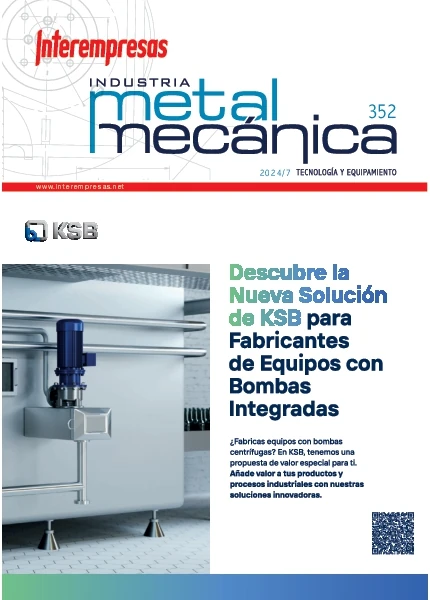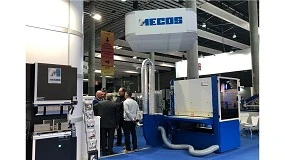Auto Home installation of photovoltaic panels
Until now, investment in any system that reduce the consumption was based on the tangible savings on this expenditure. Not provided for an increase in the rate, more than excessively to the annual average CPI. Thus, an alternative system for the reduction of the energy bill of a home, assumed an investment in a given time frame will repay.
At present, the problem of the price of oil and their direct derivatives, such as gas or diesel, will report that in a few years, perhaps, turn on the heating is a luxury, with an annual growth rate much higher than the CPI. Examine consumption in our homes and establish strategic plans and specific alternatives to deal with this situation should face an inexorable, especially when now urgently, depreciation decreases exponentially each year.
Existing solutions for the reduction of consumption have a limited impact, must be accompanied by own energy production system so that the resurgence of the oil crisis could neutralize.
It is at this point, where the average consumer is inhibited due to lack of technical knowledge, the false belief of prohibitive prices, or the little information specific to individuals.
In this article we will look at concrete, workable solutions and assimilable to energy problems that can arise in a home, with a focus on a specific application.
A production of own energy system can be established in a building, consisting of a community of neighbors or in a private house. In both cases the most used and practicable solution is a system of solar energy capture.
Additionally, in farms or venues away from housing, where the noise generated by them is not annoying, wind turbines can also be used, it is absolutely a size less than employees in wind farms, but with optimal performance.
The uptake of solar radiation is divided into three types of plates, thermals, the photovoltaic and the mixed.
A thermal solar plate consists basically of a circuit of tubes that circulated water in its interior and heated thanks to the capture of solar energy. Its main advantage is the total widespread implementation that makes it a common application. Its disadvantage is the cost of installation, carried out by specialized personnel and use only-oriented heating systems.
The photovoltaic plate converts received into electric current solar radiation, which can subsequently feed any device. Their advantages lie in can be used in any application; the installation can be performed by any person without the need of previous knowledge and is modular, allowing the simple autonomous power of a garage or shed light, until an autonomous system of feeding. Its drawback is that higher power requirements, greater is the number of panels and the necessary surface they occupy, leaving electricity production circumscribed to the space available on the terrace of the community or the roof/ground of the particular House.
Mixed plates are photovoltaic panels which incorporate the heating tubes of water circuit. Its pre-eminence is obvious, because they meet the advantages of the two types of plates. The main drawback is the high cost of the same, it is not sufficiently used and widespread technology.
Therefore, a domestic system of electricity production, in practice, is currently limited to the use of photovoltaic panels and can be sized according to three possibilities:
• 1. An autonomous circuit for small facilities.
• 2. A support system on the power consumption of the household.
• 3. A production system connected to the electric company.
In an autonomous system or a system of support, there is no connection to the mains.
Installation is similar in both cases, employ the same elements and allows the simple installation auto. The difference is that the autonomous will be a unique system of feeding places or devices that would otherwise put into hands not--electricity-oriented, and of support will be used in facilities with electrical connection, which wanted to become independent and feed "for free" any of them.
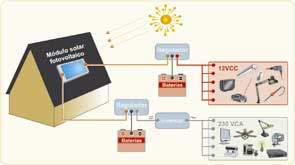
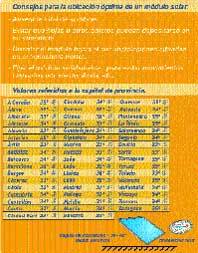
Conscious that the best way to instruct and explain a photovoltaic solar system is the situate it in a real application, have selected also real products that contribute to the development of the same.
The products described in this article belong to the mark Fadisol, basing the criterion of selection in his good relation price/quality, the highly detailed instructions and in Spanish, as well as the extensive range that the mark commercialises. For the batteries decant us by Yuasa, company with a widely known path.
Suppose that wish to install a system of autonomous lighting in a garage.
Any photovoltaic system composes of:
• 1. The plates captadoras, that only worked during the day.
• 2. The batteries, where will store the power produced by the plates.
• 3. The regulator-loaders that will commission to manage the direct consumption of the plates, the batteries and the load of these.
• 4. The investor, that will convert the signal of 12 or 24 volts provided by the system in a signal of 230 V.
In some cases the regulator-loaders and the investor, also can purchase in an alone device, usually designated solar station.
• 1. The first step is to establish the solution or electrical devices that the system will feed.
So as to rentabilizar to the maximum the solar installation, will have to select light bulbs of low consumption, (PL), fluorescent and other elements that contribute to the energetic saving. These components, usually available with feeding to 230 V, also exist with feeding to 12 V and whenever it was possible, in a photovoltaic system, will have to purchase to this tension. As we will describe more advance, the conversion of the signal of 12 or 24 V in a signal of 230 V repercute directly in a loss of power, that can avoid by means of the use of devices with feeding to 12 or 24 V.
In the example that occupies us, a garage with some approximate dimensions of 4 x 9 m, commonly would light with 3 conventional light bulbs of 60 W. In his place will employ the light bulbs PL of Fadisol C-0176, the equivalent of low consumption and feeding to 12 V. It fits to stand out, that the model to 12 V is identical in appearance to one of 230 V, incorporating the standard thread And27. In addition to the three inner light bulbs, will install an additional in the outside of the garage, obtaining a total of 4 light bulbs PL of 12 V/11 W, equivalents to the power generated by 4 light bulbs of 230V/60W.
• 2. Establish the half demand of daily power, is the second step for dimensionar the photovoltaic system. Splitting of the proportionate data by the manufacturer, has to multiplied the power by the hours that the device will be connected.
The use of the inner lighting of the garage will be different to the one of the outside. Whereas in the interior the utilisation will be sporadic, go in and take out the car, look for or leave any object, etc., the external light will keep connected all night. Therefore, we can posit that the total time of the inner use will be of a maximum of 2 h/dia, and the outside of 11 h, (result of the average between the schedule of winter and the one of summer).
Therefore, the daily consumption in the interior will be the sum of the power of the three light bulbs by the hours of operation, (11 W x 3 light bulbs x 2 h= 66 W). The daily demand in the outside will correspond to the product of an alone light bulb by the average of nocturnal hours, (11 W x 11 h= 121 W). The sum of both will offer the total consumption newspaper, (66 + 121= 187 W).
• 3. Calculate the performance of the solar plates is the following step. Depending on the geographic situation, the period of the year, and the meteorological conditions, the solar signpost will generate a distinct power. Splitting of the fact that the signpost has oriented properly, (fig. 2), the factor of half regional performance for the Iberian peninsula is of four. Like this, the power of each signpost, can multiply directly by 4, obtaining the daily power by signpost.
Employing solar panels monocristalinos of Fadisol C-0168, with a power indicated of 36 W, the power produced by each unit daily will be of (36 x 4= 144 W).
• 4. With the result of the previous steps can determine the number of photovoltaic plates that ensure the daily consumption required. Simply it has to divide the consumption obtained in the step 2 between the performance by signpost of the point 3, (262 W / 144 W= 1,8 panels), that translated to the number integer immediately upper indicates a total of 2 photovoltaic panels of 36 W.
• 5. The autonomy of the system. In an application like this, where precisely requires obtain the electricity during the nocturnal hours, the solar panels do not act. By this reason, the system has to include a half of storage that collect the power obtained during the day to be able to employ it during the night.
The only way to achieve it is by means of batteries. The number and capacity of the necessary batteries for our system obtains from the resultant value in the daily half demand, (point 2).
Dividing the daily demand between 12 V, that is the tension of work of the batteries, the result launches the approximate capacity of necessary storage, (262 W/ 12 V= 21, 8 Ah).
Now well, the system has to offer the necessary autonomy to face periods of scarce production, like days nublados, persistent fogs, etc. In critical applications, like systems of alarm, control, telecommunications, etc., the autonomy can establish until in 10 days. In the application that analyse, a maximum of 2 will be sufficient. (21,8 Ah x 2= 43,6 Ah).
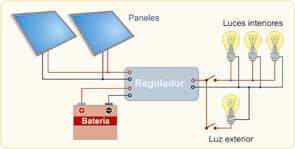
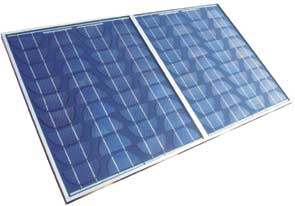
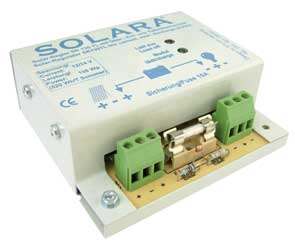

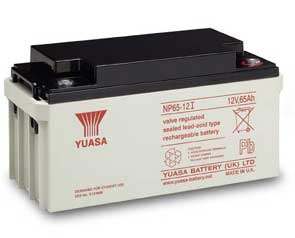
Simplifying, to obtain the configuration of the battery or batteries at the same time necessary set, you can simply apply the following formula:

Similarly, selecting a higher capacity battery Yuasa, for example 65 Ah, the result of applying the formula would indicate that we would get even a slightly higher autonomy, with a single battery of the above-mentioned capacity (43.6 Ah / (65 Ah x 0.75)) = 0.89.
• 6. The final element that will complete the system is the regulator. It takes two functions, on the one hand to select power supply, according to the conditions of production of the panel, allowing direct consumption, or on the other hand the cargo shall be carried out completely on the batteries. In its other role, incorporating the necessary circuits to the limitation of load of batteries, protections against overload, stabilizer, stress, etc.
After applying the various parameters to measure the solar photovoltaic system, would be the following list of material:
• 4 bulbs of 12 V/11W, Fadisol C-0176, connected three of them in parallel.
• 2 photovoltaic panels of 36 W, Fadisol C-0168, connected in parallel.
• 1 regulator 8 A, Fadisol C-0191
• 1 battery 12 V/65 Ah, Yuasa NP 65-12.
The physical installation of these elements is easy and intuitive. The most sensitive issue is to get the tilt appropriate for the panel when it is situated on the roof. The rest of connections are resolved without problems, helping the instructions that accompany each item.
In short, the installation of a photovoltaic system does not require previous knowledge, occupying no more than 1 hour to calculate the necessary elements and a 3-4 hours of Assembly so that this application ready for operation. Since then, autonomous activity of the system will allow a free and unattended production.




